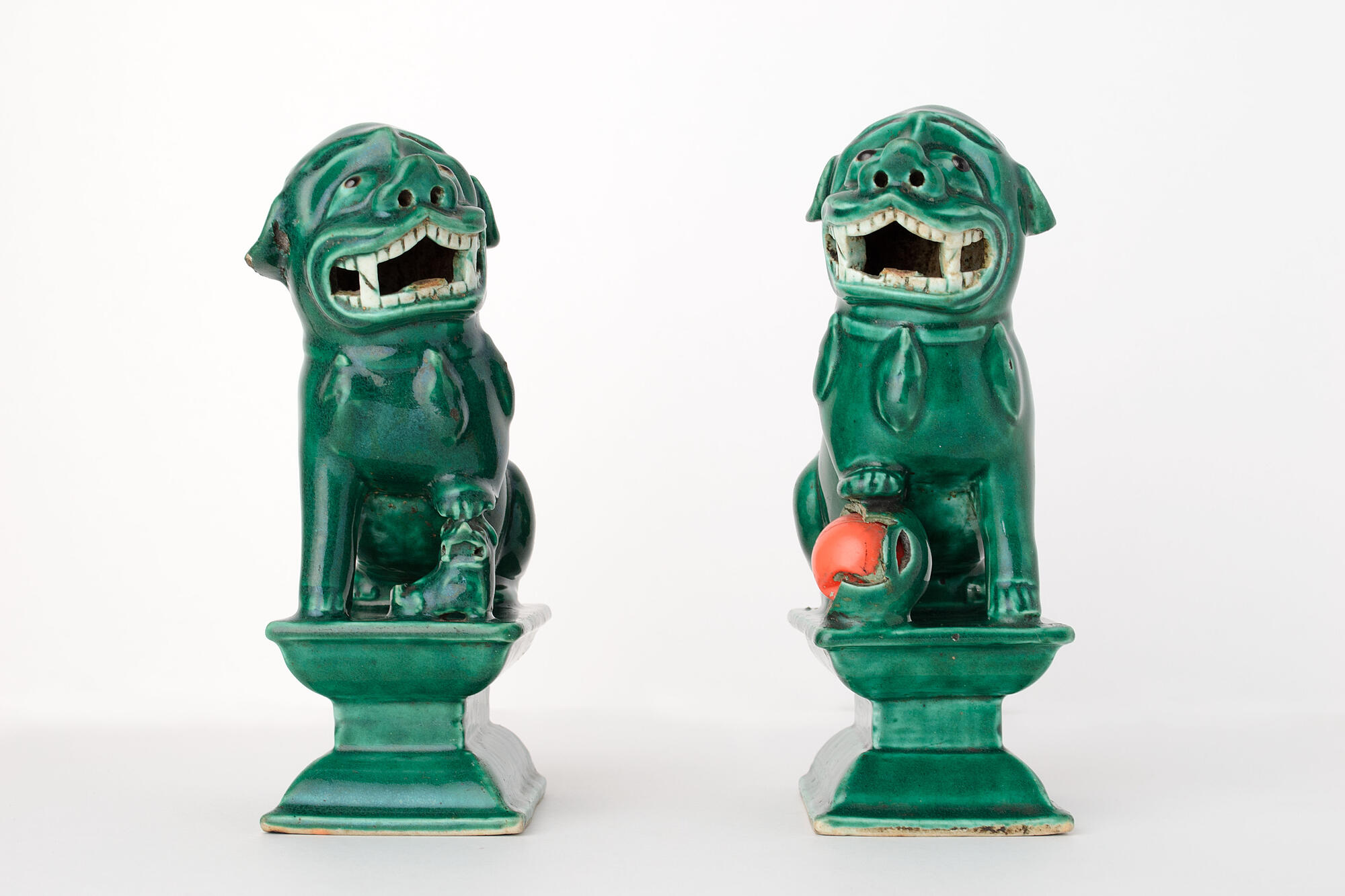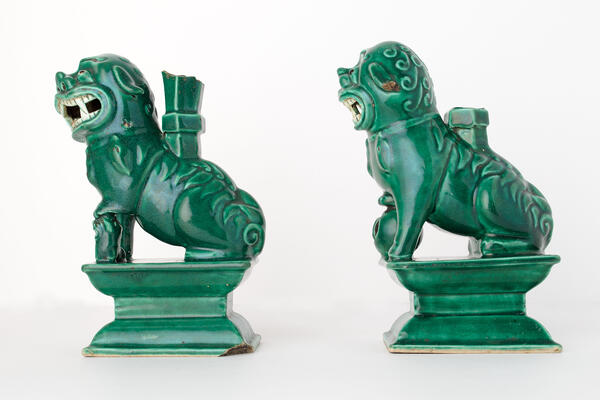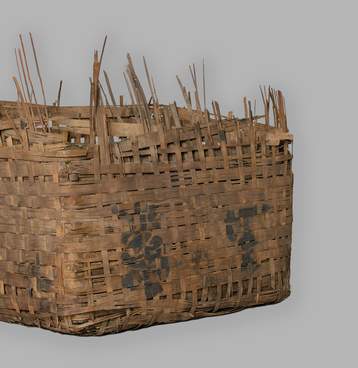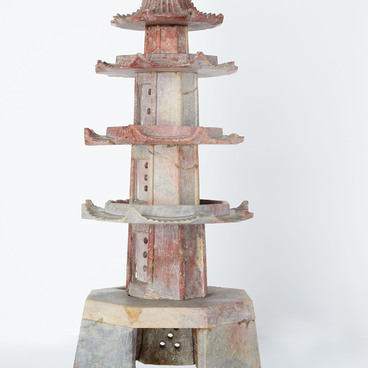A shishi is a Chinese guardian lion. It is a traditional image of a mythical guardian lion, sometimes depicted as a dog or a deer. Lions were typically made of stone and presented in pairs. They were placed in front of the gates of imperial Chinese palaces and tombs, administrative and religious buildings.
The image appeared approximately during the Han Dynasty. Nowadays, such lions can be seen guarding the entrance of Buddhist temples in East Asia (China, Korea, and Japan) and Central Asia (Mongolia and Russia) and the entrance of Shinto shrines.
Traditionally, guardian lions are placed in pairs on both sides of the entrance to a shrine. The one on the right is usually a lion, and the one on the left is a lioness. It is quite easy to tell them apart even though at first, they might seem identical.
This can also be seen in the pair of figurines displayed at the Kyakhta Museum of Local Lore. The male leans his paw upon a ball, known in the Buddhist tradition as a “tama”. It represents a treasure, a symbol of Buddhist knowledge, brings light into the darkness, and can fulfill wishes. The female is usually depicted with a lion cub under her paw, representing birth and prosperous offspring.
Sometimes, one of the two lions has its mouth open and the other one — closed. This can be interpreted in different ways. Such lions might symbolize birth and death, openness to good thoughts and rejection of evil, or the sounds of the first and last letters of the Sanskrit alphabet (“ah” and “un”). The open mouth is supposed to scare away evil demons, while the closed mouth is supposed to keep and protect good spirits. Both lions from the collection of the Kyakhta Museum have their mouths open, resisting evil spirits.
It is believed that in 87 AD, Emperor Zhang of Han, the third emperor of the Eastern Han, received a lion from the king of Parthia. The following year, another animal was brought as a gift from the land of the Yuezhi in Central Asia. The earliest stone lions were made during the Eastern Han dynasty (25–220 AD) when Buddhism first entered Imperial China.
The 19th-century souvenir lions from the
collection of the Kyakhta Museum of Local Lore were purchased in 1978. They
were sold by a woman from the village of Khoronkhoy, Kyakhta District. The
figurines were used as candlesticks.



